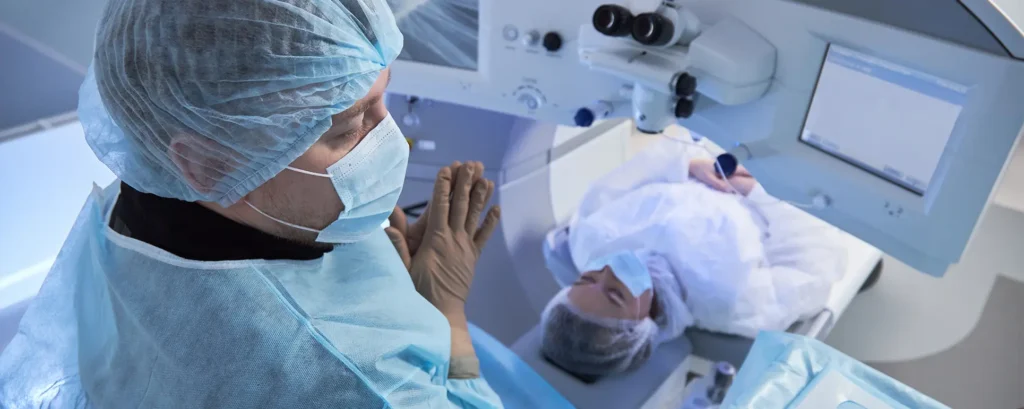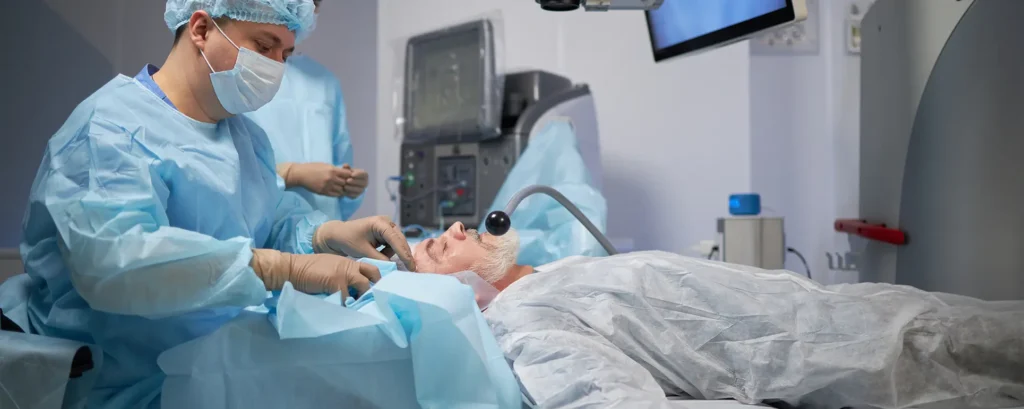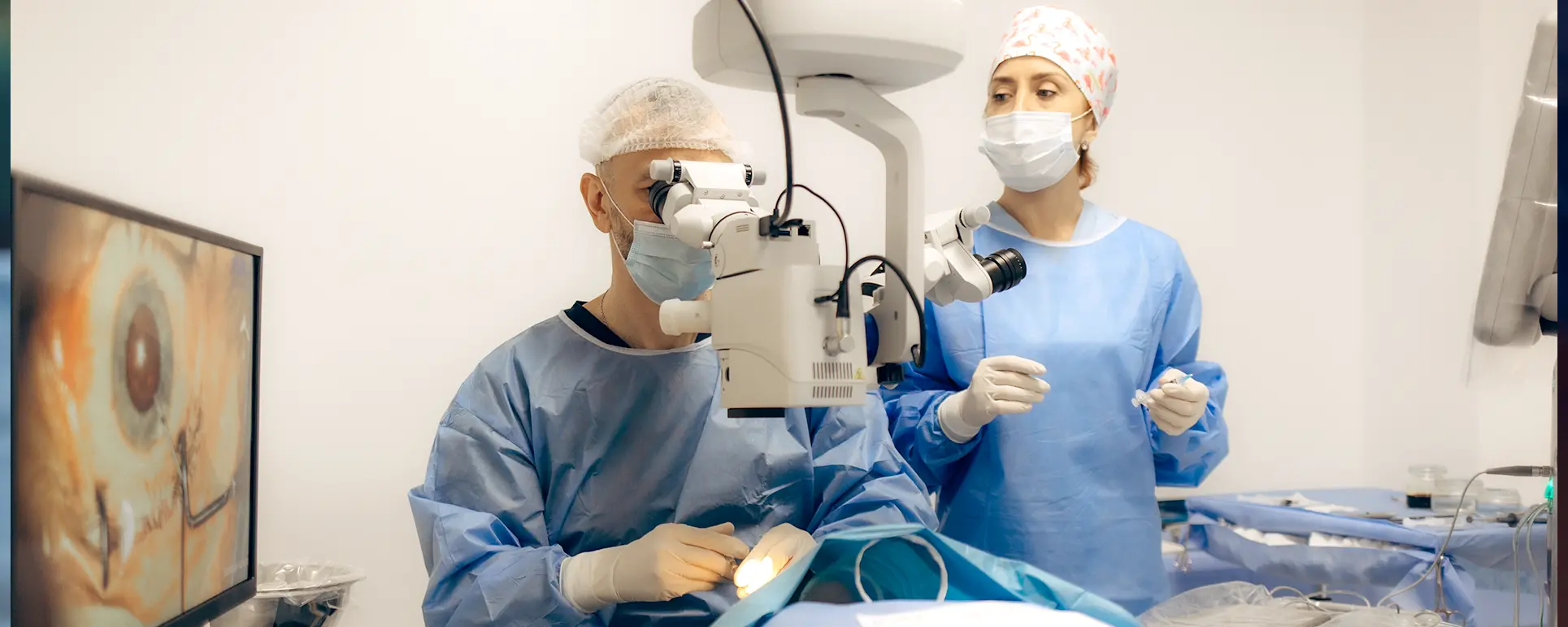Cataract surgery is one of the most successful and commonly performed operations in the world. For the vast majority of patients, it’s a straightforward, one-time treatment that restores clear vision and frees them from the blur caused by a cloudy natural lens. But occasionally, a patient may be told that a second cataract procedure is needed. If you’ve come across this situation or simply want to understand it better, you may be wondering: why would someone need another cataract operation if the cloudy lens has already been removed?
The truth is, second cataract surgeries are rare, but they do happen. There are several different scenarios where another procedure may become necessary. These might involve issues with the lens implant, changes to the capsule that holds the implant, or other eye health factors that complicate things over time. The good news is that advances in surgical techniques mean these situations can usually be handled effectively, with most patients regaining excellent vision after the additional procedure.
In this article, we’ll take a close look at why some patients need a second cataract operation. We’ll explore the most common causes, what happens during re-surgery, how recovery compares to the first procedure, and what you can expect if you ever find yourself in this position. By the end, you’ll have a clear picture of why these rare cases occur and how modern ophthalmology ensures they are dealt with safely.
Why Cataract Surgery Is Usually a Once-in-a-Lifetime Procedure

Cataract surgery works by permanently removing the cloudy natural lens of the eye and replacing it with an artificial intraocular lens (IOL). Because the natural lens is completely removed, cataracts cannot grow back in the same way. This is why most people never need cataract surgery again in the same eye. The artificial lens is designed to last a lifetime, and it doesn’t degrade or become cloudy like the original lens.
For most patients, this is the end of the story. After a short recovery period, they enjoy clear vision and often notice improvements in daily life that feel life-changing. From reading to driving, the sharpness of sight makes everything easier and more enjoyable. It’s no wonder that cataract surgery has such a strong track record of success and satisfaction.
However, there are rare exceptions. A small percentage of patients encounter situations that require further surgery. These cases don’t mean that the initial operation “failed”, but rather that certain factors — sometimes unpredictable — made another procedure necessary. Understanding these factors can help reduce worry if you ever hear of someone needing repeat surgery.
Reasons Why a Second Cataract Operation May Be Needed
1. Intraocular Lens (IOL) Dislocation
One of the more common reasons for re-surgery is that the artificial lens implant moves out of place. Normally, the IOL sits securely inside the capsule that once held the natural lens. But in some cases, the supporting capsule or its attachments weaken, and the lens shifts. This can lead to blurry or double vision, glare, or difficulty focusing.
When this happens, surgeons may need to reposition the lens or replace it altogether. Modern techniques allow for safe removal and re-fixation of the IOL, and many patients see dramatic improvement once the lens is stabilised again. Risk factors for this problem include eye trauma, certain medical conditions such as pseudoexfoliation syndrome, and previous eye surgery.
2. Incorrect IOL Power or Type
Another reason for a second cataract operation is if the first lens implant doesn’t provide the expected visual outcome. Choosing the correct IOL power requires precise measurements of the eye, but in some cases, even with advanced technology, the result may not match the intended target. This is especially true in eyes with unusual shapes, very high prescriptions, or corneal conditions.
If the lens power is off, the patient may still need strong glasses, which can be disappointing after surgery. In such cases, surgeons may consider an IOL exchange to implant a more suitable lens. This is relatively uncommon, but when it happens, it can make a big difference to quality of life. Some patients may also decide later that they’d prefer a different type of lens — for example, moving from a monofocal to a multifocal lens for greater spectacle independence — and a second operation can achieve this.
3. Capsule Complications
The capsule is the thin, transparent “bag” that holds the lens in place. During cataract surgery, part of it is removed to insert the new lens, while the rest is left intact to provide support. Occasionally, the capsule itself develops problems after surgery. It can become weak, torn, or unable to support the IOL properly.
When this occurs, the implant may need to be moved into a different position or supported with special sutures. In rare cases, surgeons may need to implant a lens in front of the capsule rather than inside it. These approaches require skill, but they are effective solutions that maintain long-term stability.
4. Posterior Capsule Opacification (PCO)
PCO is sometimes referred to as a “secondary cataract”, although it isn’t truly a new cataract. It happens when the back part of the capsule becomes cloudy over time. This can blur vision, make lights appear hazy, and reduce contrast. It’s actually one of the most common after-effects of cataract surgery.
Fortunately, PCO usually doesn’t require another cataract operation. Instead, it is treated with a simple laser procedure called YAG capsulotomy, which takes just a few minutes and doesn’t involve cutting into the eye again. However, in very rare cases where laser treatment isn’t suitable or where PCO has led to complications, a repeat surgery might be considered.
5. Eye Trauma After Surgery
If the eye suffers a significant injury after cataract surgery, the artificial lens or capsule may be damaged. This could lead to the need for a second procedure to restore vision. While serious eye injuries are thankfully uncommon, it’s important for patients to protect their eyes and wear appropriate eyewear when doing activities with risk of impact.
6. Coexisting Eye Diseases
Sometimes, patients with other eye conditions such as glaucoma, macular degeneration, or diabetic eye disease may develop complications that require additional surgery. While these procedures aren’t strictly a repeat cataract operation, they may involve revisiting the surgical site to manage both the implant and the underlying disease.
What Happens During a Second Cataract Operation?

If a patient does require re-surgery, the approach depends on the reason. For lens dislocation, the surgeon may remove the IOL and place it back in the correct position, or implant a new one. For capsule problems, they might use special sutures or a different type of lens that doesn’t rely on the capsule for support. In cases of refractive surprise (wrong lens power), the lens can be exchanged for a more accurate one.
The procedure is usually more complex than the first cataract surgery because the anatomy of the eye has already been altered. Surgeons often use advanced imaging, delicate instruments, and sometimes longer operating times to achieve the best outcome. Despite this, results are generally very positive, and patients often feel a strong sense of relief once their vision is corrected again.
Recovery After a Second Cataract Operation
Recovery after re-surgery can vary depending on the complexity of the procedure. For some, the recovery is very similar to the first cataract surgery, with quick visual improvement and minimal discomfort. For others, especially where sutures are used or the eye has been under stress, the healing process may take a little longer.
Patients will typically need to use prescribed eye drops to prevent infection and control inflammation. Regular check-ups ensure that the new lens is stable and that the eye is healing well. The good news is that, just like after the first operation, most people go on to enjoy clear and stable vision.
Reducing the Risk of Needing a Second Operation
While not all risks can be eliminated, certain steps can reduce the likelihood of repeat cataract surgery. These include:
- Careful pre-surgical measurements and lens selection
- Choosing an experienced surgeon
- Protecting the eyes from injury after surgery
- Attending all follow-up appointments
- Managing other eye conditions such as glaucoma or diabetes effectively
FAQs
1. Can cataracts come back after surgery?
No, once the natural lens is removed during cataract surgery, it cannot become cloudy again, so the cataract itself cannot “grow back”. What sometimes happens is that the capsule holding the lens implant becomes cloudy, which can blur vision and mimic the symptoms of a cataract. This condition is called posterior capsule opacification (PCO). It is not a true cataract but is often referred to as a “secondary cataract” in everyday language. Fortunately, it is usually treated with a quick outpatient laser procedure called a YAG capsulotomy, not another full cataract operation.
2. How common is it to need a second cataract surgery?
It is quite rare. The vast majority of people only need cataract surgery once in each eye during their lifetime. Large studies show that the success rate of cataract surgery is over 95%, and complications requiring repeat surgery are uncommon. When re-surgery is necessary, it is usually due to issues with the lens implant, such as dislocation, or because the chosen lens power did not deliver the expected result. Patients can be reassured that while a second operation is possible, it is the exception rather than the rule.
3. Why might the lens implant move out of place?
The intraocular lens (IOL) is designed to sit securely within the capsule left behind after cataract surgery. However, in some cases, the fine supporting structures that hold the capsule in place can weaken over time. This can cause the lens to slip or tilt, which in turn may blur vision or create double images. Factors such as trauma to the eye, conditions like pseudoexfoliation syndrome, or previous eye surgery may increase the risk of this happening. If it does occur, surgeons can often reposition the lens or replace it with another type that is better supported.
4. What happens if the wrong lens power was chosen?
Cataract surgery relies on very precise measurements of the eye to select the correct lens implant. Modern technology has greatly improved accuracy, but in rare cases, the chosen lens power may not give the expected result, especially in eyes with unusual shapes or high prescriptions. If this mismatch significantly affects vision, an IOL exchange may be considered. This means the surgeon removes the first implant and replaces it with a more suitable one. Some patients may instead choose to manage with glasses or contact lenses, depending on their lifestyle needs.
5. How safe is a second cataract operation?
A second cataract operation is usually more complex than the first because the eye’s anatomy has already been changed. However, experienced surgeons use advanced techniques to minimise risks and achieve good outcomes. As with any eye surgery, there are risks such as infection, swelling, or retinal complications, but these are uncommon. Most patients who undergo re-surgery do well, with a clear improvement in vision once the underlying issue has been corrected. The key is to have the procedure performed by a surgeon who regularly manages these rare cases.
6. Is recovery longer after repeat cataract surgery?
Recovery can vary depending on what was done during the second procedure. If the lens was simply repositioned, healing may be relatively quick and similar to the first cataract surgery. If the implant was exchanged or sutured in place, recovery may take a little longer and involve closer follow-up. Patients are usually prescribed eye drops to reduce inflammation and prevent infection, just as they were after the first surgery. Most people regain stable vision within a few weeks, although final results can sometimes take longer if the eye has been under stress.
7. Can glasses or contact lenses be used instead of another operation?
In some cases, yes. If the issue is a small refractive error — for example, the lens power was slightly off target — glasses or contact lenses may be enough to provide clear vision without another surgery. However, if the implant is dislocated, the capsule is damaged, or the blurring is significant, re-surgery is usually the best way to restore sight. Surgeons will discuss all the options with patients to help them make an informed decision.
8. Does needing re-surgery mean the first operation was a failure?
Not necessarily. Cataract surgery is one of the most successful procedures in medicine, and the vast majority of patients never need another operation. A second procedure does not mean the first one “failed”, but rather that an unexpected issue developed afterwards, such as lens movement or capsule weakness. These issues are sometimes linked to the eye’s natural tissues and cannot always be predicted. In most cases, re-surgery successfully resolves the problem, and patients go on to have good long-term vision.
9. How can I reduce the chance of needing another cataract operation?
While not all risks can be prevented, there are steps patients can take to reduce the likelihood of repeat surgery. Choosing an experienced cataract surgeon is an important first step. Protecting the eyes from trauma, attending follow-up appointments, and managing other eye conditions such as glaucoma or diabetes are also vital. Patients should also follow all aftercare instructions closely, including using prescribed drops, avoiding strenuous activities during early recovery, and reporting any sudden changes in vision without delay.
10. What should I do if my vision gets worse after cataract surgery?
If vision worsens after cataract surgery, it’s important to contact your surgeon promptly rather than assuming it’s normal. Blurriness could be due to something minor such as dry eye, or a more significant issue such as lens dislocation, retinal problems, or capsule clouding. A thorough examination will identify the cause and guide treatment. In many cases, the solution is straightforward, whether it’s a simple laser procedure for capsule clouding or a surgical adjustment of the implant. Acting early gives the best chance of protecting and restoring vision.
Final Thoughts
Needing a second cataract operation is not common, but it can happen for a variety of reasons. Whether it’s a lens that shifts out of place, an unexpected refractive outcome, or issues with the capsule, modern surgical techniques offer safe and effective solutions. For patients, the most important thing is to stay informed, attend follow-up appointments, and seek prompt care if vision changes after surgery.
At London Cataract Centre, our experienced team of cataract surgeons use the latest technology and methods to minimise risks and achieve excellent outcomes. And in the rare event that a second procedure is needed, we have the expertise to guide you safely through it. If you’re considering cataract surgery or have concerns about your vision after a previous procedure, we’re here to help you find the best way forward.
References
- American Academy of Ophthalmology (2024) What is a Posterior Capsulotomy?. Available at: https://www.aao.org/eye-health/treatments/what-is-posterior-capsulotomy (Accessed: 8 September 2025).
- The Royal College of Ophthalmologists (2010) Cataract Surgery Guidelines. Available at: https://curriculum.rcophth.ac.uk/wp-content/uploads/2014/12/2010-SCI-069-Cataract-Surgery-Guidelines-2010-SEPTEMBER-2010-1.pdf (Accessed: 8 September 2025).
- Durr, G.M., Ahmed, I.I.K., Sheybani, A. and Schlenker, M.B. (2021) ‘Intraocular lens complications: Decentration, Uveitis-Glaucoma-Hyphema syndrome, dislocation, and other issues’, Eye, 35, pp. 1619–1637. Available at: https://pubmed.ncbi.nlm.nih.gov/32652203/ (Accessed: 8 September 2025).
- Lundström, M., Dickman, M., Henry, Y. et al. (2018) ‘Risk factors for refractive error after cataract surgery: analysis of 282,811 cases’, Journal of Cataract and Refractive Surgery, 44(4), pp. 447–452. Available at: https://pubmed.ncbi.nlm.nih.gov/29685779/ (Accessed: 8 September 2025).
- Jafarinasab, M., Feizi, S., Javadi, M.A. et al. (2023) ‘Indications and outcomes of intraocular lens exchange’, Journal of Ophthalmic and Vision Research, 18(2), pp. 123–130. Available at: https://pmc.ncbi.nlm.nih.gov/articles/PMC10053672/ (Accessed: 8 September 2025).

